Hoffenheim have been a team that has consisted of talented players that are poached by bigger clubs in the last couple of years with players such as Roberto Firmino and Niklas Süle finding success at Liverpool and Bayern Munich respectively having made their names at Hoffenheim. Next up for the Bundesliga club is 20-year-old Christoph Baumgartner who, in his first league campaign, contributed to 11 goals this season from a variety of attacking positions. Given his age and lack of experience in the top flight of Germany, many top European sides have yet to approach him but his performances this season have shown that there is a solid foundation in his play as well as some glimpses of future stardom.
This scout report will provide a tactical analysis of the Austrian’s contribution to Hoffenheim’s Bundesliga season that will showcase his output on both sides of the pitch.
Player profile
To begin this analysis, we need to look at Baumgartner’s player profile. He is essentially a modern-day number 10. He’s a technically proficient attacking midfielder who is capable of good defensive work with one of his best attributes being is great pressing. Under Alfred Schreuder, the 20-year-old’s variety in his skillset has meant that he has been deployed in several positions including appearances at striker and central midfield.
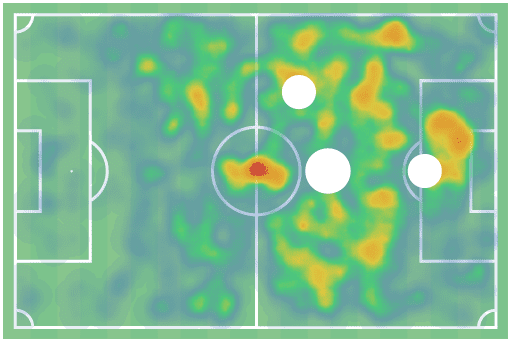
His heat map above showcases the territory that Baumgartner likes to operate in. It’s clear to see that he likes to operate in between the lines but isn’t a stationary target as shown by the fact he doesn’t just position himself in the central areas. This versatility in his positioning makes him a great asset for a team that likes to play fluid and attacking positions where the attacking players will have to be interchangeable. The graphic also highlights his positioning inside the box, an area which he often runs into. His positioning in the box is very central, which is very good since the chance and shot quality is much better in central positions.
Defence
We have already mentioned that one of Baumgartner’s strengths is his great pressing ability. As a midfielder in the modern-day, this is an important asset as more of the top teams around Europe have implemented a press in their style of play. His quality in pressing can be seen in his successful pressures per game, which is at a whopping 6.93. This is a tally that ranks him the 95th percentile out of attacking midfielders in Europe’s top five leagues, thus highlighting his prowess in this department. His commitment to winning the ball back for his teammates can be seen in other areas too. At 180cm, Baumgartner is a good size for a midfielder and his height gives him the confidence to challenge for 4.27 aerial duels per game, a solid figure. While his success rate is a measly 38%, it should be noted that he usually challenges the opposition defenders or defensive midfielders who tend to be bigger than him.
His contribution on this end is not down to just his commitment though, as he is an intelligent player. He is able to pick and choose the correct moments to press and win the ball back instead of running around and ruining the overall team press. This example against Dortmund showcases how Baumgartner is successful when pressing the opposition.
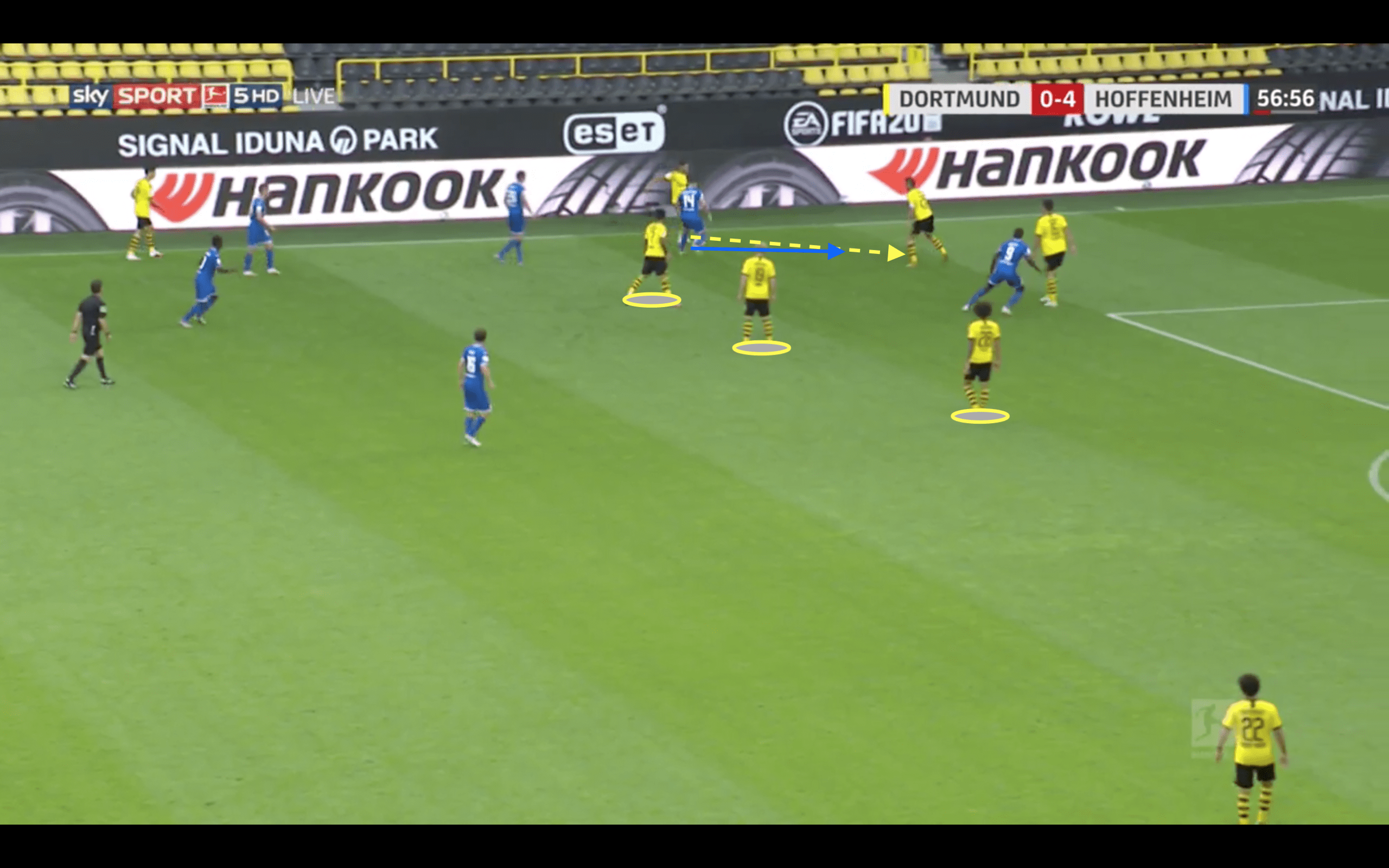
Hoffenheim have Dortmund in a trap here and use the touchline as an added pressing barrier so this a perfect time to win the ball back. It looks like three open Dortmund players in the midfield can be found but Baumgartner has shaped his body well to have them in his cover shadow so those options are no longer on. This only leaves one passing option for Dortmund and the Austrian can close this option as he intercepts the ball.
Of course, he can sometimes get these situations wrong. He averages 1.38 fouls per game usually from being overzealous in his pressing. His defensive skill set is also not that great, which is to be expected since he is predominantly an attacking midfielder. He is capable of winning slide tackles but his 40% success rate and just over 0.5 attempts in these challenges show that this not a strong suit in his game. In this example against Augsburg, we can see how this affects a scenario in which Hoffenheim could have countered.
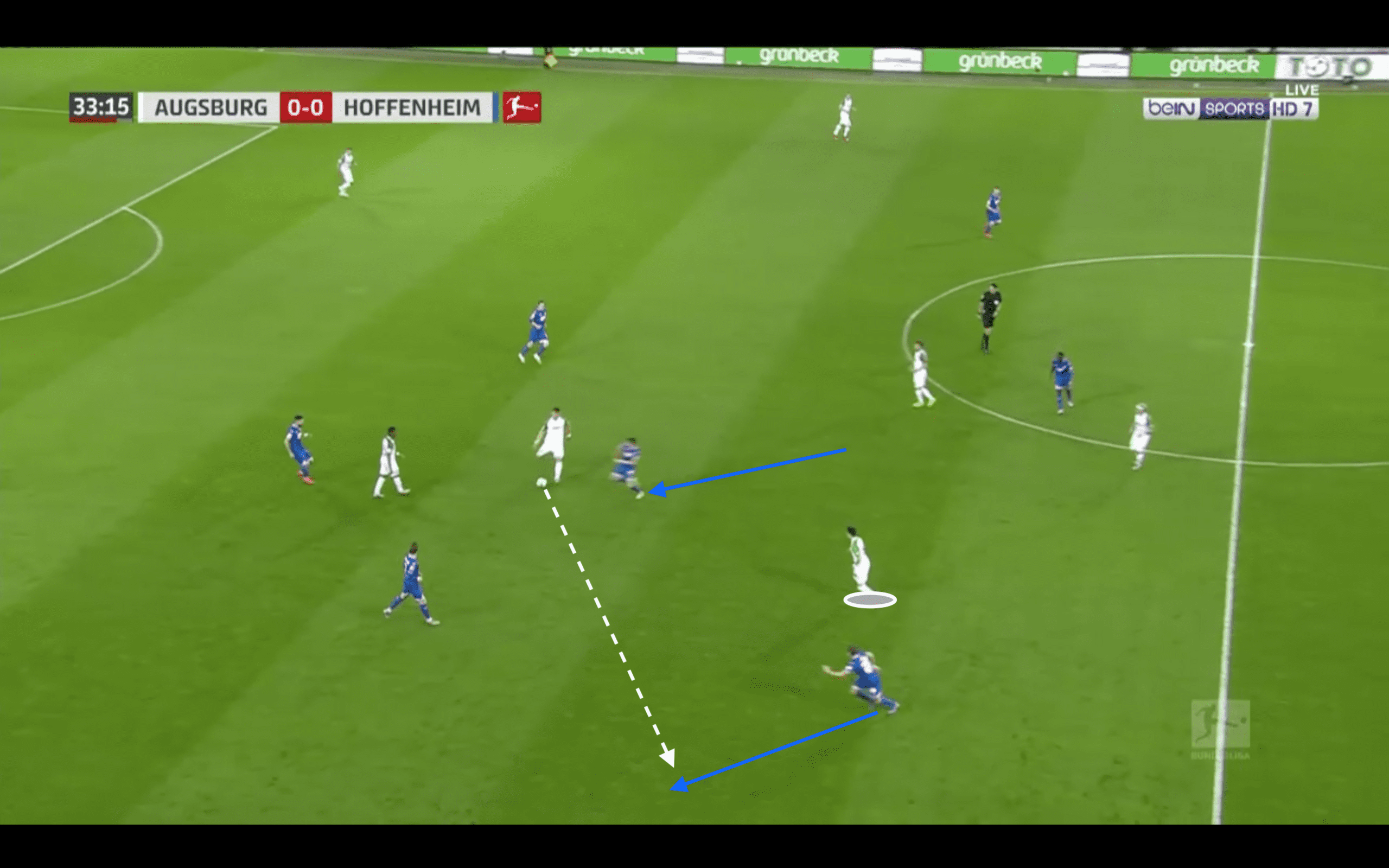
Here, Baumgartner is pressing the Augsburg player in possession. He does well to have an Augsburg player in his cover shadow, which he did by closing down very quickly. However, he looks to win the ball back so he slides in but it ends up being a tad too late. Baumgartner did not recognise that his teammate was on his way to intercepting the pass from the Augsburg player so Hoffenheim would have won the ball had the 20-year-old not gone in for the challenge.
This play is one of the worst-case scenarios for Baumgartner as he is usually late on challenges in a 1vs1 situation where there are no teammates to help him. Overall, Baumgartner does bring value defensively with his pressing. However, his poor tackling and even worse interception numbers (0.46 possession adjusted interceptions per game) make him a difficult choice for a deeper position like in central midfield. In an attacking position, whether that’s on the wing, upfront or in the number 10 role, his defensive contribution is good enough for those roles as there is less emphasis on defence.
Attack
Despite Baumgartner playing in central midfield quite a few times throughout the Bundesliga season, he is a player that is rarely involved in the build-up phase. He is a player that usually is at the end of the build-up phase and helps the team transition into the attack. His positioning in between the lines helps do this, which we touched on earlier.
To be a great midfielder, there are several skills that you have to be good at. We can look at some of his qualities via data from Wyscout. First, we are going to judge his impact on progressing the ball and his overall creativity. Progressive runs are a good indicator of whether a player can carry the ball into more advanced areas. The Austrian only has 1.21 progressive runs, with elite forward players averaging more than 3 progressive runs per game. Another way of progressing the ball is via dribbling. Baumgartner is a skilled player and has tricks up his sleeve, but his dribbling numbers are quite low for an attacking midfielder. He averages around 2.71 dribbles per game but his success rate of 57% is a great positive as elite wingers average over 60%. So in terms of progression, there are positive signs but still room for improvement. In terms of creativity, there is, even more, to improve on. His expected assists are very poor at 0.05 per Wyscout and the number of passes into the final third (1.64) and into the penalty area (1) is concerning too. We did mention that Baumgartner is usually on the end of chances but as an attacking midfielder or winger, you also have to be able to create and those underlying numbers indicate that there is a long way to go in that department.
When we look at the match footage, there are some glimpses of his great technique and creative quality. This example against Köln shows this well.
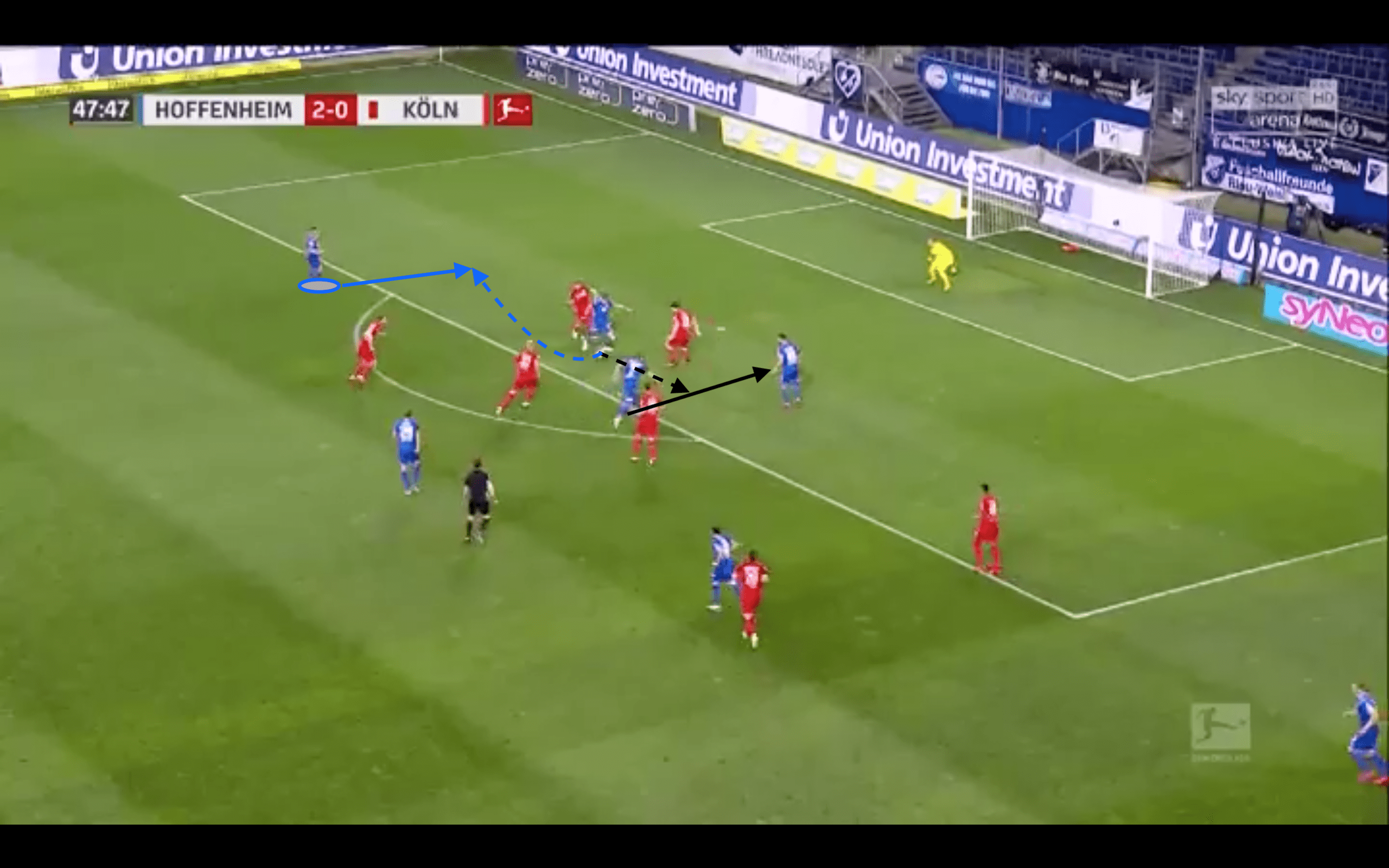
Here, the black arrows indicate the easy option for Baumgartner, who could have just laid off the ball to his teammate who’s making the run inside the box. However, the Austrian saw another teammate, on the left, who is open when he received the ball in the box. Baumgartner made a great move, dragging the ball back before flicking it to his teammate and this set up his teammate for a chance on goal, which he converted.
When looking at his dribbling, he seems to thrive in open space rather than beat people in tight spaces. He does have the technical quality on occasion, like the little drag backs, but he is a player who takes a heavy touch to beat the defender rather than using a skill.
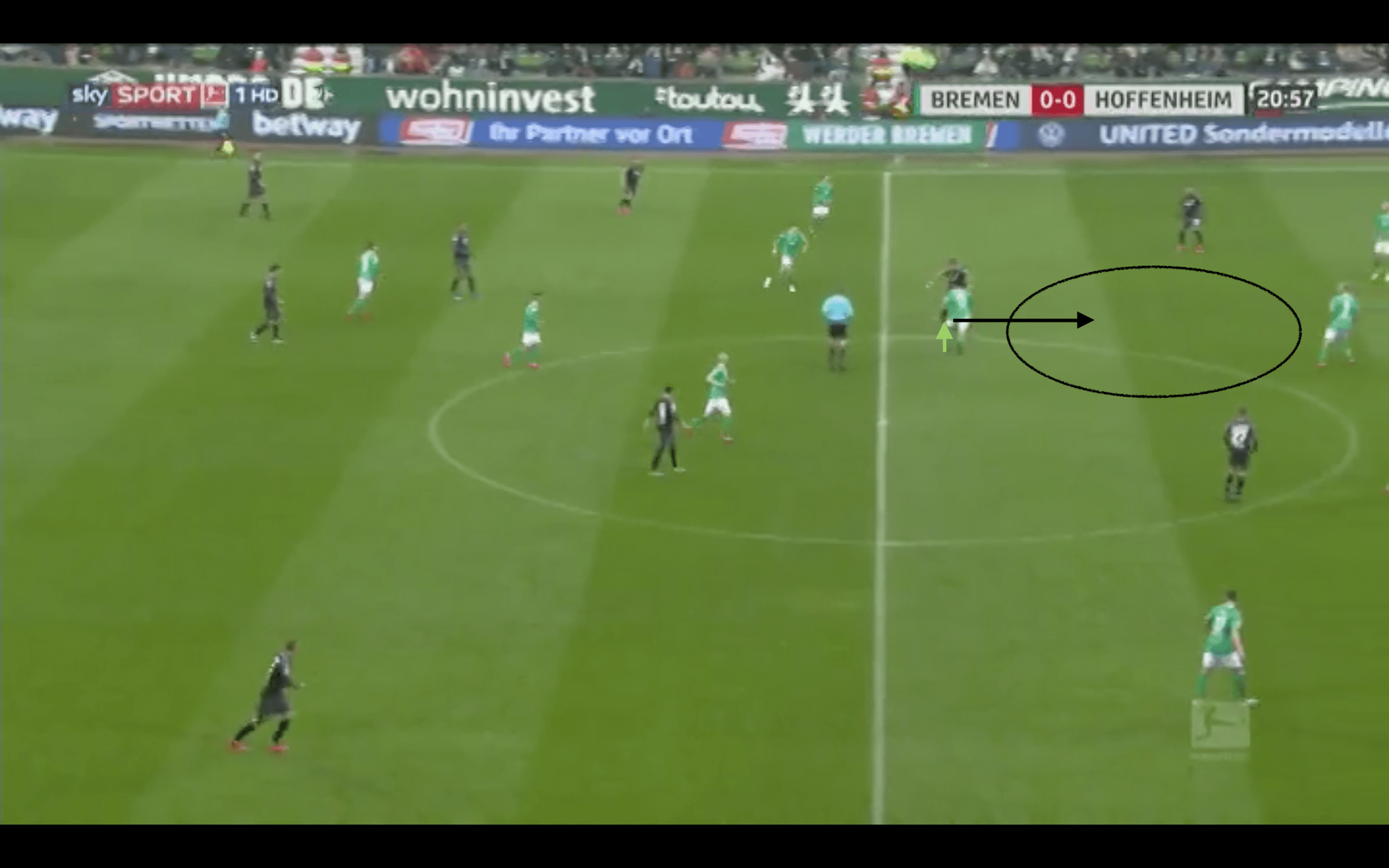
Here, against Werder Bremen, he recognises the opponent trying to close him down as he is slightly out of position and has to win the ball back. With space in between the lines, Baumgartner nudges the ball forward into the space after taking a touch to control the ball. The defender stretched his legs out to make the challenge but since the touch was heavier than a normal touch, Baumgartner was easily able to get past. This is for the most part on how Baumgartner beats his man, as he lacks the explosive speed that wingers who are elite dribblers have.
Having discussed his weak points in attack, it’s only fair to discuss his strengths. What makes Baumgartner stand out is his goalscoring. His non-penalty xG is at 0.51, which is a hugely impressive number and ranks in the 98th percentile against wingers and attacking midfielders in Europe’s top five leagues. Earlier, we touched on Baumgartner’s positioning in the box and how he’s usually in the centre of the box. His positioning and movement in the box are supreme already and it helps him have the best quality of chances. This is seen by his 0.15 xG per shot, a value that ranks in the 89th percentile in Europe’s top five leagues in his position but also by his shot map.
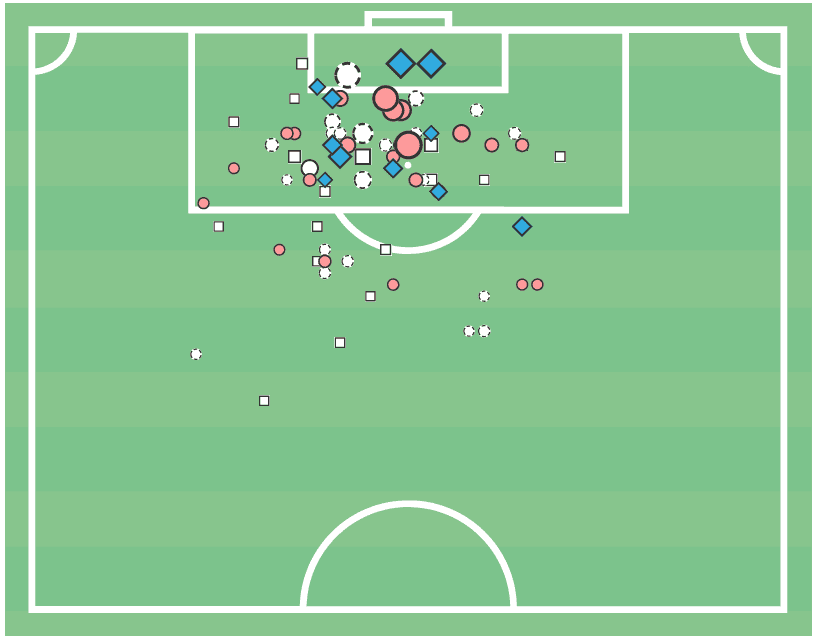
As the shot map shows, most of his efforts come from the middle of the box. The closer to goal and the more central, the chance of scoring increases. So from looking at this map, it should come as little surprise that Baumgartner is scoring goals since his shot quality is superb. The map also highlights his tendencies to shoot on the left-hand side of the box. He likes to cut in from those shot locations and use his right foot and the lack of shots from the right side also show that he doesn’t do this enough with his left foot. Out of 76 shots, only six were from his left, which identifies a potential weakness.
The question now is how does Baumgartner get in positions like this? There are several reasons for his efficiency in front of goal. His role is to be on the end of chances and he is great at making late runs into the box, which is one of his main ways of getting into great goalscoring positions. This example against Köln is a perfect example of this.
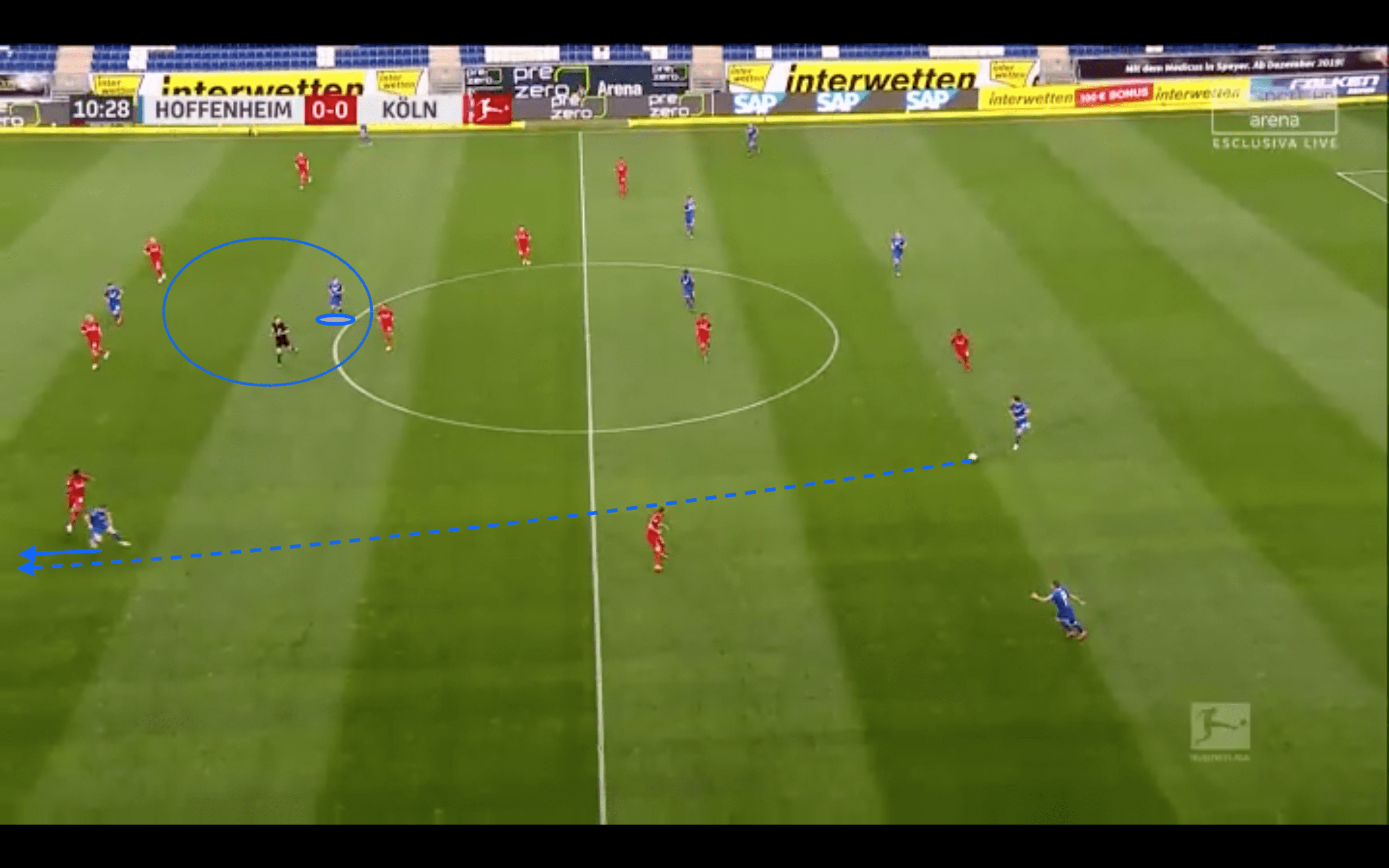
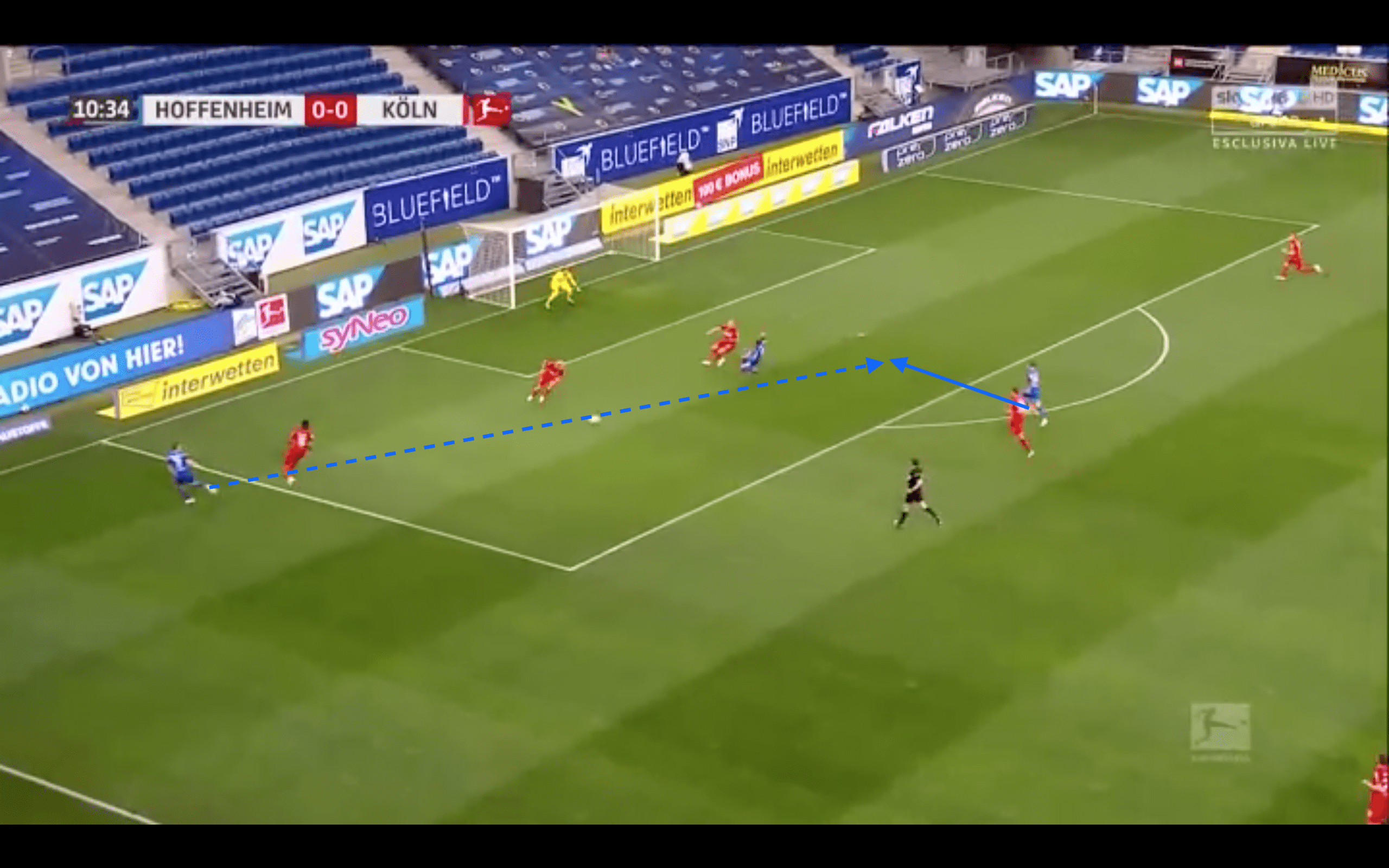
The first image showcases the beginning of the move where Robert Skov makes a run in behind and the defender is just about to play the pass. Baumgartner in this situation has once again found himself between the lines in some space. This positioning becomes crucial as it gives him a head start on the defender closest to him. The second image shows this as Skov cuts the ball back and Baumgartner finds himself running into the box late and with space for a nice and easy finish. He does this again for his second goal in the same game, which highlights his strength in this area.
His positioning inside the area is also another reason as to how he gets great opportunities. He is great at exploiting space between opposition defenders and usually positions himself in that area for the most part. This example against Wolfsburg shows another way in which he finds space inside the box.
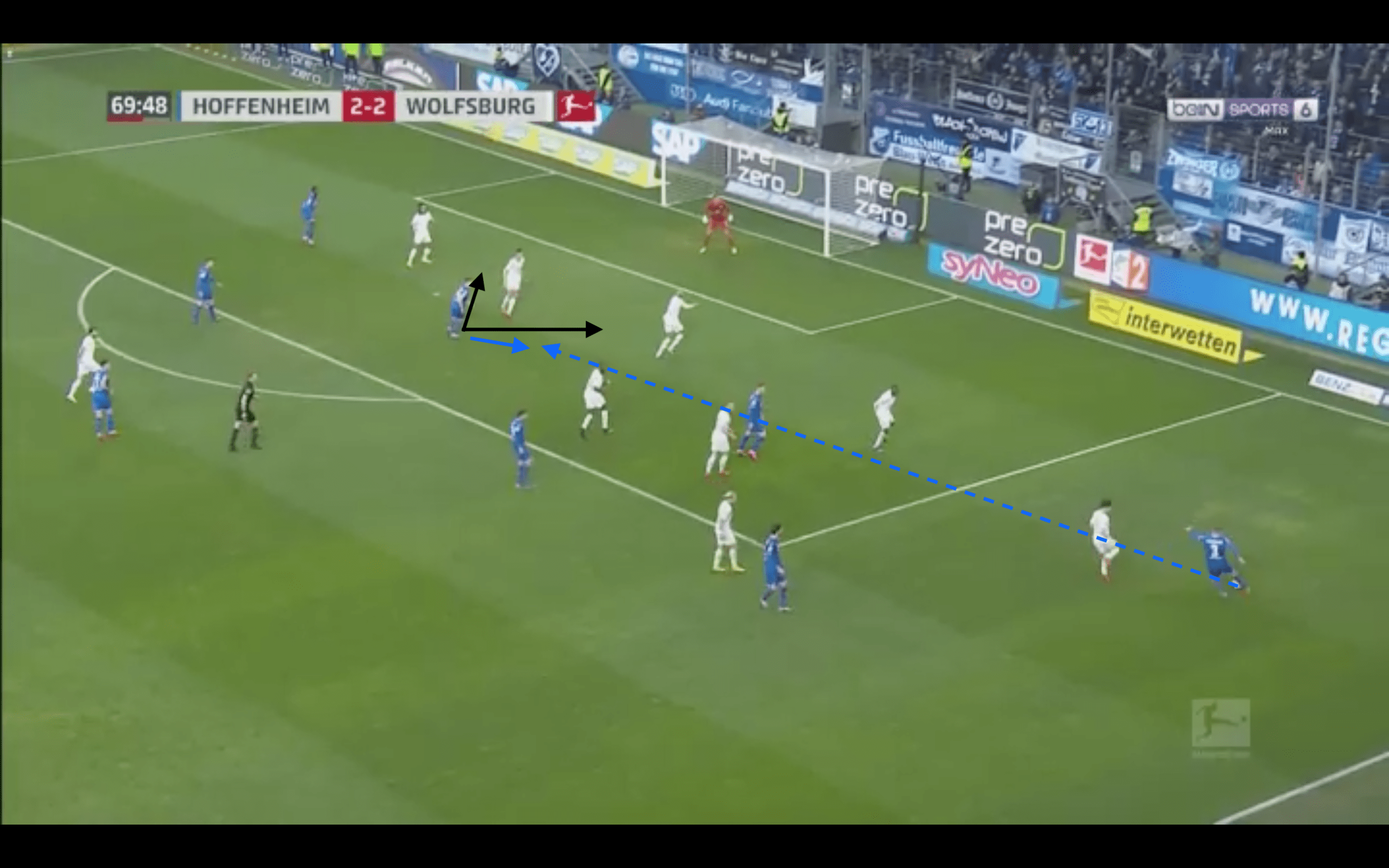
The 20-year-old’s positioning here is excellent as it gives him a variety of options. The black arrows here indicate the possible other options that Baumgartner could have gone for. He can go make a darting run into the near post if the cross is flat into that area. Or, he could dummy going to the near post before making a curling run into the far post where he can meet a looping cross. The former is a movement utilised effectively by someone like Olivier Giroud and the latter is one used by the likes of Mauro Icardi and Robert Lewandowski to great effect. There is also enough space between him and the defender so that when the ball gets put into his direction, as it does in this example, he has time to either take a touch or get a shot off. Here, he decides to take a first time shot into the bottom right corner, which the keeper saves brilliantly.
Overall, Baumgartner is a good offensive player with great upside. He is someone who has good technical ability with good feet that help him in his dribbling. His passing is decent, with a pass accuracy of 78%, but what he has in accuracy, he loses in value as his progressive and creative numbers via his passing are subpar. His creativity, in general, can be improved especially with a role that has more of an emphasis in that department. However, his goalscoring is elite already with his movement and position being very good, which in the end, makes up for his lack of quality in other areas.
Final remarks
At 20-years-old, Baumgartner is one for the future but he has already shown signs that he is a future star. His performances this season have helped Hoffenheim finish sixth, which mean they qualify for the Europa League next season. A move away is too early and the Europa League is a great proving ground for him anyways, especially alongside talented forward players in Andrej Kramarić and Robert Skov.
With young and extremely talented coach Sebastian Hoeneß taking charge of the club next season, an improvement in Baumgartner’s performances will likely be expected, which is a scary thought.





Comments